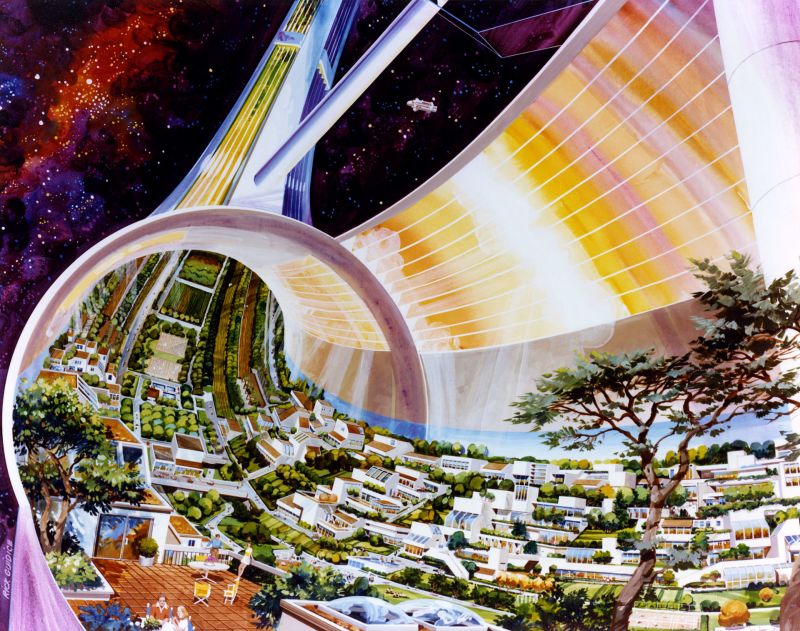Exploring the Future of Space Colonies
In 1975, a groundbreaking research initiative led by Princeton professor Gerard O’Neill embarked on an extensive 10-week study to explore the possibilities of future space colonies. Collaborating with renowned space artists Rick Guidice and Don Davis, the team sought to illustrate innovative yet unrealized concepts of what habitats beyond Earth might look like. The visionary designs proposed by O’Neill’s team highlight the potential for sustainable living in the cosmos.
Distinct Designs for Extraterrestrial Habitats
O’Neill’s research team identified three unique designs for potential space stations:
- The Bernal Sphere: Initially proposed by John Desmond Bernal in 1929, this design was adapted by O’Neill’s team to create a highly-curved living surface equipped with agricultural areas, inspired by a “crystal palace” concept for reflecting light.
- The Toroidal Colony: Featured prominently in Davis’s illustrations, it uses a giant tilted mirror to reflect sunlight to the colony’s inner surfaces, creating a vibrant living environment.
- The Cylindrical Colony: Known as the ‘O’Neill Cylinder’, this design offers spacious accommodations, capable of sustaining thousands to millions of inhabitants through rotating structures that generate artificial gravity.

Capacity and Sustainability Potential
The proposed designs featured capacities ranging from 10,000 to one million residents. This scalability emphasizes the versatility and utility of these concepts in a sustainable future, catering to various potential populations residing in space.

Technological Implications
Rick Guidice’s artwork not only brought these structures to life but also highlighted the essential technologies needed, such as large solar arrays that would be required to power these colonies and their operations. The implications of these designs extend beyond mere survival; they represent a harmonious blend of technology and nature, promising a new beginning for humanity in the stars.

Conclusion
As we continue to explore the vastness of space, these pioneering designs by O’Neill’s team and their artistic collaborators serve as a testament to human ingenuity and the ongoing quest for extraterrestrial living. Whether through the Bernal Sphere, the Toroidal Colony, or the Cylindrical Colony, the possibilities for future habitats in space are as inspiring as they are limitless.





